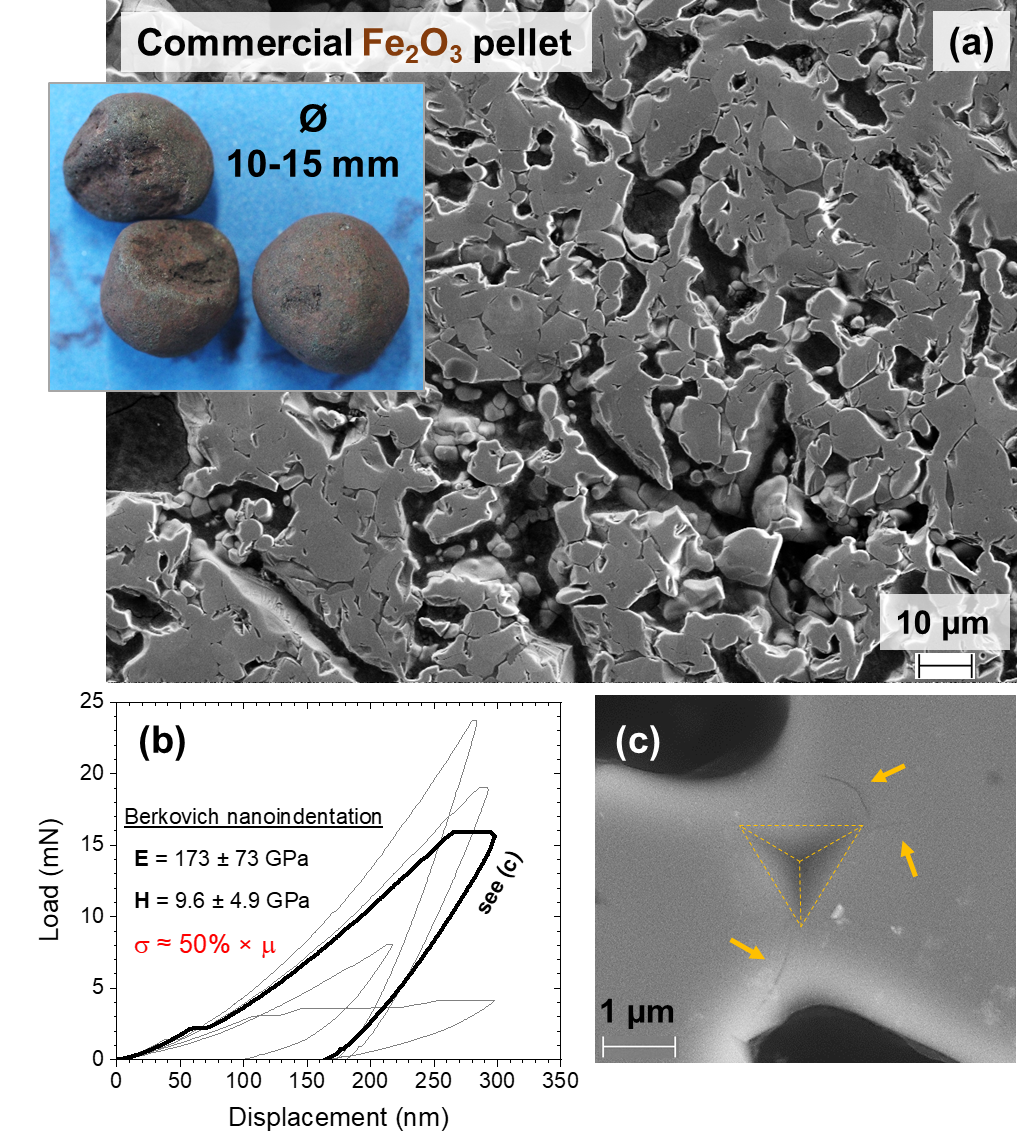
Nano-/microscale deformation of functional oxides
Oxides find broad applications as catalysts or in electronic components, however are generally brittle materials where dislocations are difficult to activate in the covalent rigid lattice. Here, the link between plasticity and fracture is critical for wide-scale application of functional oxide materials.
Together with our Partner group (A/Prof. B.N. Jaya) at the IIT in Bombay we have looked at deformation in BaTiO3 where near-theoretical strength is achieved for sub-micron pillars, and significant plasticity reported as the length scale increases past 1 µm. Ongoing research looks at the temperature-dependent microscale fracture toughness of BaTiO3 around the Curie temperature where a tetragonal to cubic phase change is expected. Additionally, together with the University of Queensland we have studied sub-micron single crystal pillars of the transparent semiconductor Ga2O3 under variable strain rate conditions, to elucidate subtle transitions in active dislocation mechanisms during compression which may be later linked to improved processability of the single crystal with applications in optoelectronic devices (manuscripts in preparation).
Another focus in how the defect structure in oxides affects the functional properties. Together with collaboration partners at the TU Darmstadt, we have determined that the dislocation structure formed under low-load indents into TiO2 can have a strong effect on the electrical resistivity [1]. In a new project funded by the KSB Stiftung, high temperature micromechanical measurements are also ongoing on single crystals of iron oxide phases, as measurements on prepared ore pellets are not feasible (see Figure). A phase of interest, Fe1-xO (wüstite) is critical for a number of applications. In the CO2-free H2-based iron ore reduction Fe1-xO is the rate-determining intermediate phase in the production of iron for the steel industry. While for H2 production by water-splitting, Fe1-xO is a potential photochemical material. For both of these processes, the transport mechanisms of Fe ions within Fe1-xO and therefore the atomic structure of Fe1-xO are key to understand. In studying how the variations in oxide stoichiometry affect the defect structure of the wüstite phase, mechanical investigations on bulk-scale single crystals are also here complimented by reactive magnetron deposited iron oxide thin films for precise control over both the structure and chemistry of the resultant phase.













